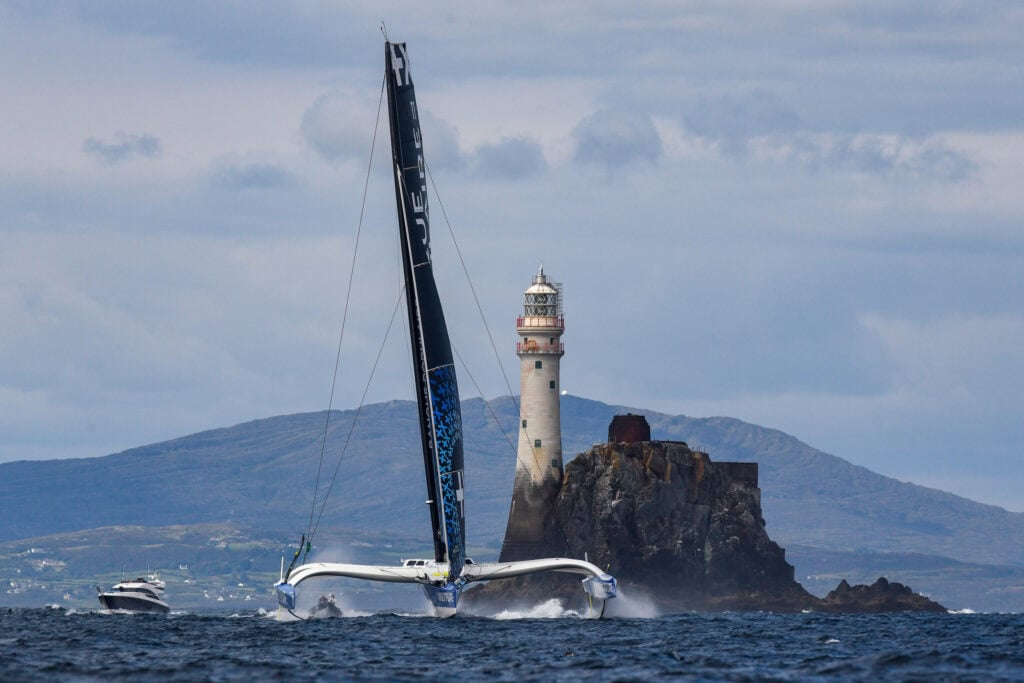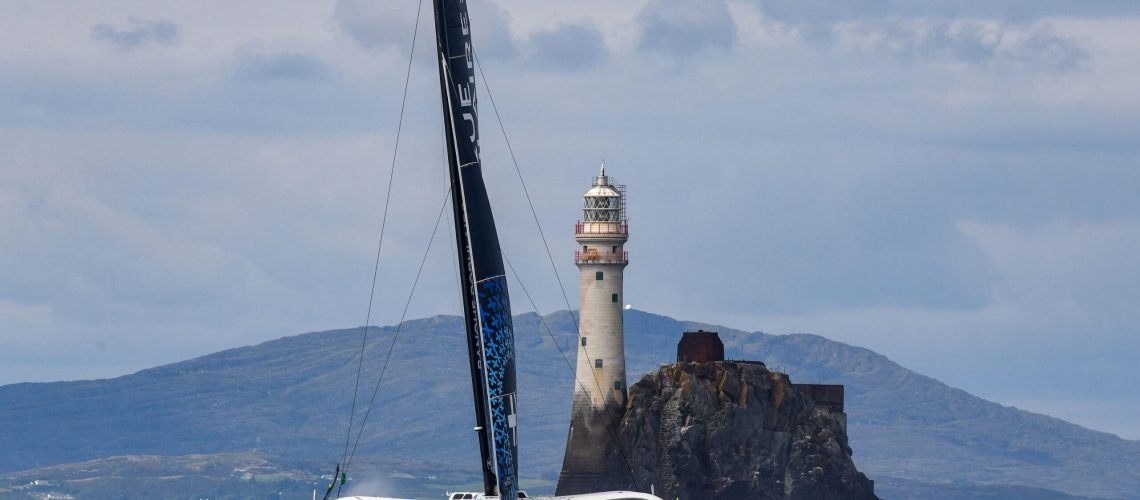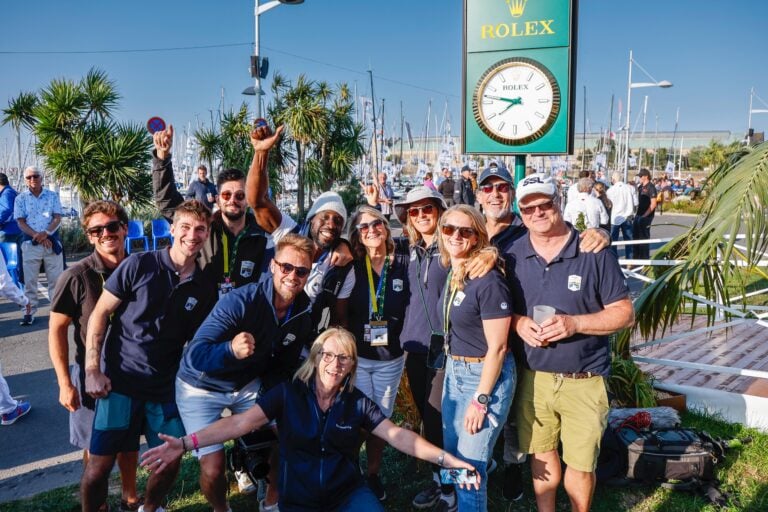
22 YEARS LATER
If Myles from Tidal Pulse Media calls you to ask if you want to come work at the Rolex Fastnet Race and the Admiral’s Cup—an event that hasn’t been held in 22 years—it’s only natural to say yes. And after 16 non-stop days of work, here I am to share what the experience was like.
An unforgettable experience and a historic comeback
The Fastnet is an event held every two years, and I had already worked at the 2023 edition. To be honest, I fell absolutely in love with the event and was really eager to return for the 2025 edition—but of course, you never know if they’ll call you back.
Spoiler: they did call me back!
In addition, the summer of 2025 witnessed a special chapter in sailing history: the return of the Admiral’s Cup after 22 years of absence. Coinciding with the 100th anniversary of the RORC and the Rolex Fastnet Race, this event not only brought legendary figures and exciting new talent to the scene, but was also a true honor and professional challenge for me.
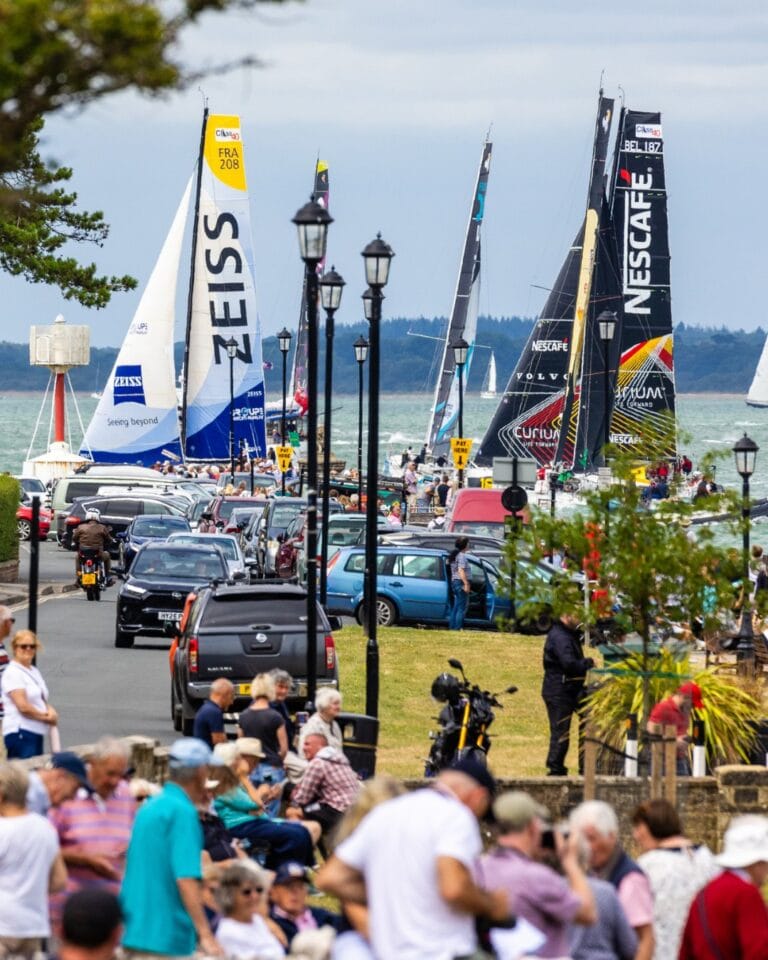
The magnitude of the event
Both events, organized by the Royal Ocean Racing Club, brought together more than 3,500 sailors from 50 nations and a fleet of over 450 boats. For those who love sailing, the Fastnet Race is considered the most iconic offshore race in the world, with a course of 695 nautical miles from Cowes to Cherbourg, facing demanding conditions and sailing among one of the most competitive fleets in existence. The Admiral’s Cup, meanwhile, once again puts at stake what for decades was regarded as the most coveted trophy and a true symbol of global prestige in high-level sailing: competition, strategy, and teamwork at the highest level.
How does the Admiral Cup work?
Much simpler than it seems, both professionals and amateurs can compete, and here’s how it works:
Teams compete for their yacht clubs, with each team bringing two boats. For example, the New York Yacht Club was represented by two boats: the “Black Pearl” (the larger boat) and “Abracadabra” (the smaller boat).
There are several race stages:
-
One “channel race”: a kind of offshore regatta but without straying significantly from the coast. In this race, they sailed for almost 24 hours before reaching the finish line.
-
Several “in-shore” races: short races held near the coast.
-
The Rolex Fastnet Race: all the boats participate in this 600+ mile offshore race, which also counts towards the overall rankings.
At the end of the event, there are three main results:
-
The winning club—this edition it was the Yacht Club de Monaco (fun fact: a member of Monaco’s royalty was the captain of the smaller boat!).
-
The winner in the “big boats” category (Admiral’s Cup 1), which was JOLT 3, belonging to the Yacht Club de Monaco.
-
The winner in the “small boats” category (Admiral’s Cup 2), which was Jolt 6, also represented by the Yacht Club de Monaco.
My personal experience: 16 days of hard work, adrenaline, and sleeping wherever and whenever possible.
Being an active part of these two events has truly been a marathon: 16 days of nonstop work, managing communications, content, presenting, and capturing those unique moments in the midst of the adrenaline of competition. I won’t lie—it has been exhausting, but the satisfaction of seeing the results, being part of such iconic events, and being surrounded by the best in the world makes it all worth it. Knowing that my work helps raise the profile of sailing—and of women’s roles in this sport—is, without a doubt, one of the greatest sources of pride and achievement in my career.
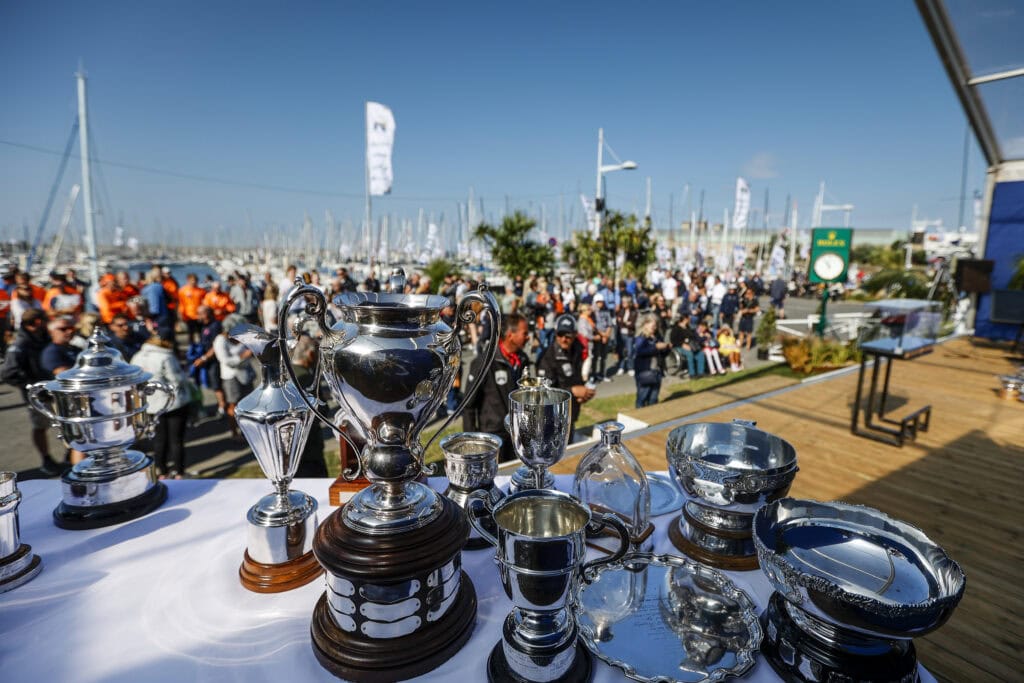
The professional and personal challenge
If there is something to highlight from these weeks, it is how grateful I am for my experience and years as a professional athlete.
It is not easy to withstand the pressure and the long working hours of events of this magnitude (we did a 26-hour shift and many others of over 14 hours), but having been an athlete, I believe it gives me that resilience and that “never give up” attitude, which I later appreciate so much in my work.
Capturing the best content and telling the best story when you have only slept three hours is not easy, but I must say I was surrounded by an amazing team of people who made the work much easier. Every dawn was an opportunity to learn or try something new, and every sunset closed a day full of challenges overcome.
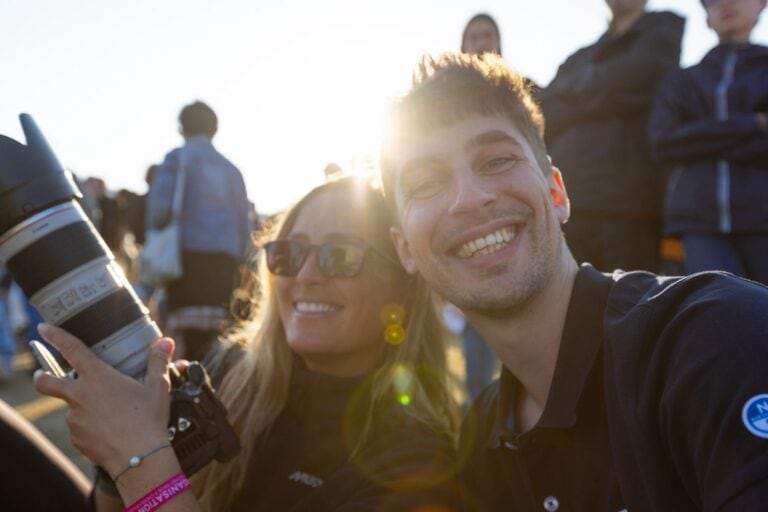
Working at night... but at sea
When you are going out on the water at 1:00 in the night, with almost no light and a GPS showing you where the boat you have to find is, you start to wonder if you really like your job as much as you think x)
The truth is that, as I explain below, working at sea has, overnight (literally), become a real challenge for me. But telling the stories we have shared, capturing the tears and the smiles, and sharing with the whole world what we have experienced through our eyes makes it all worthwhile.
Working against panic
Lastly, I didn’t want to miss this opportunity to mention that currently, for better or worse, I am still working at sea, knowing that if a wave comes that is a bit stronger than normal, I can have a panic attack that leaves me frozen like a rock, unable to move and crying uncontrollably.
All of this is due to the accident I had two years ago on a boat, which apparently has left me with quite a strong post-traumatic stress disorder.
In any case, I am in control of my life; as long as they keep calling me to work, I will keep fighting to return to normality and leave this intense and uncontrollable fear behind.
Of course, I am infinitely grateful to Myles, director of Tidal Pulse Media, and to the Royal Ocean Racing Club for trusting me with this event.
See you on the water,
Julia
